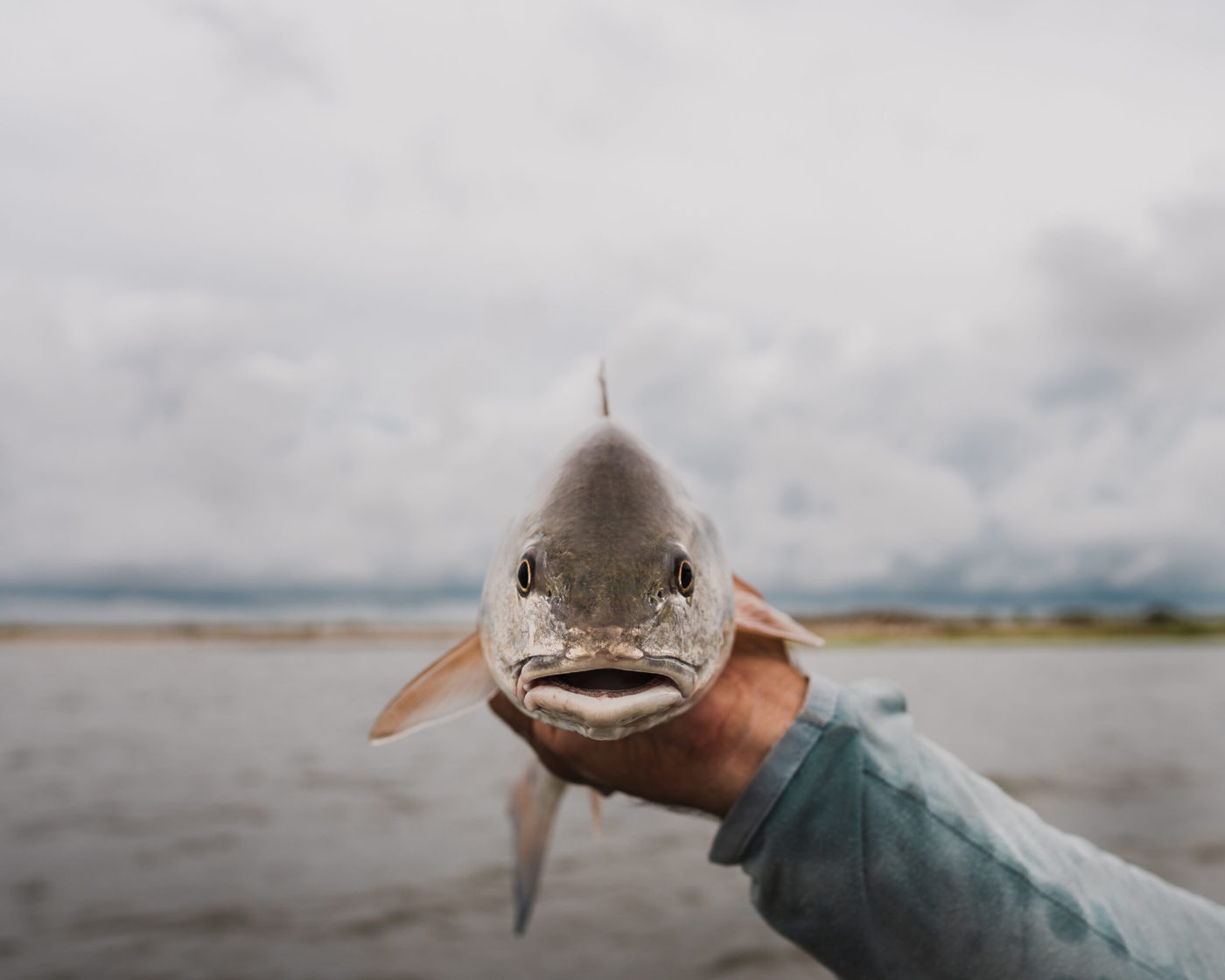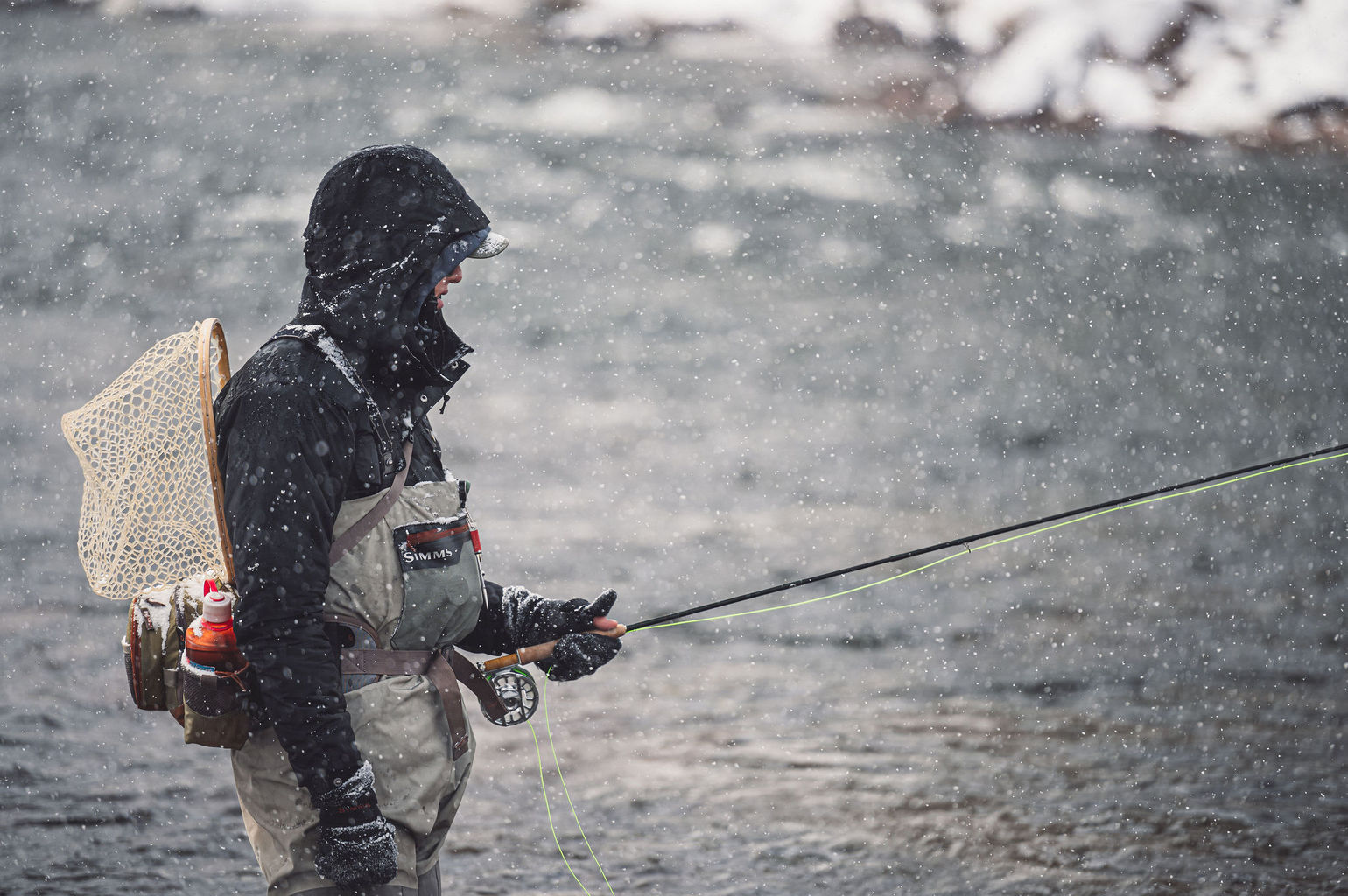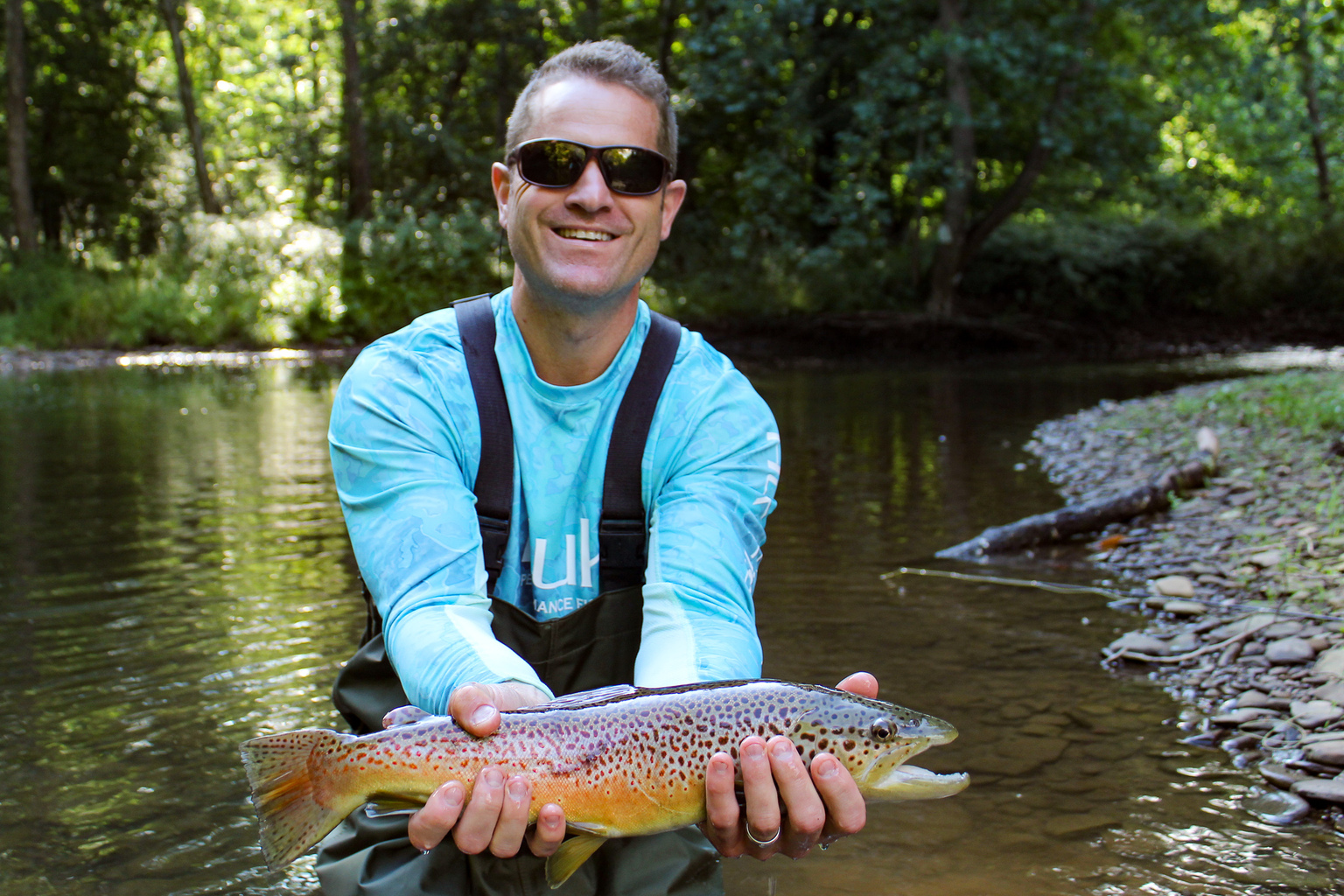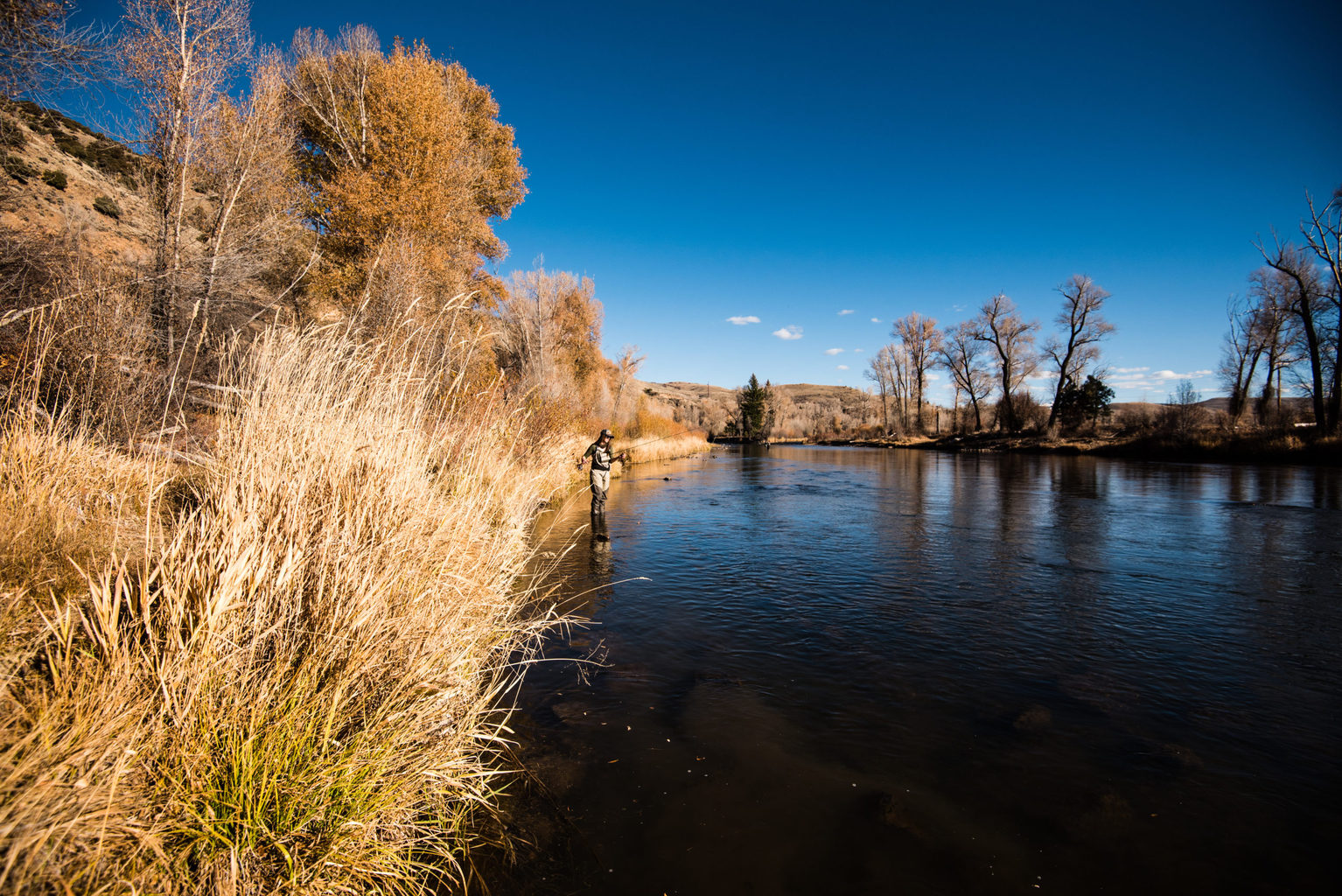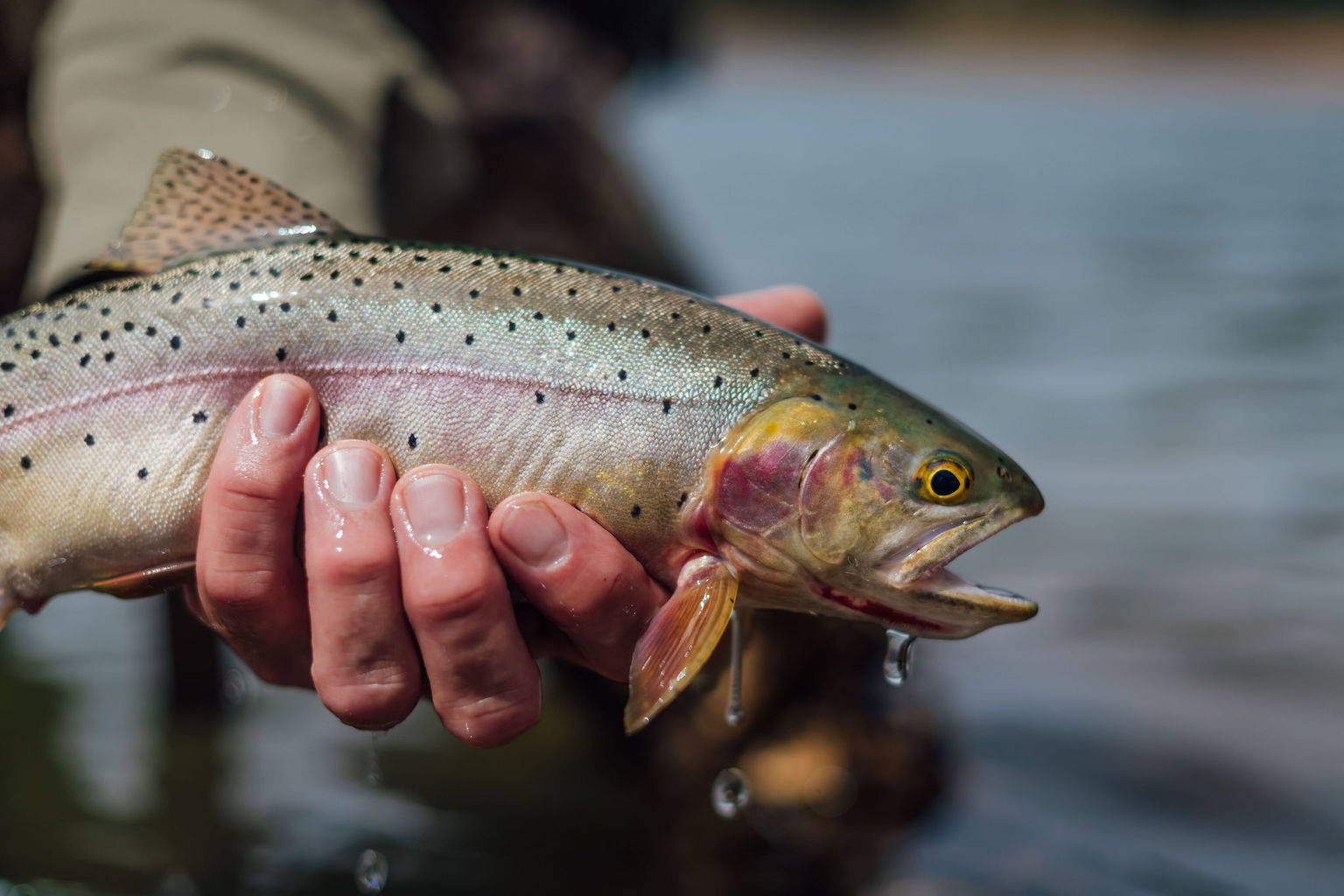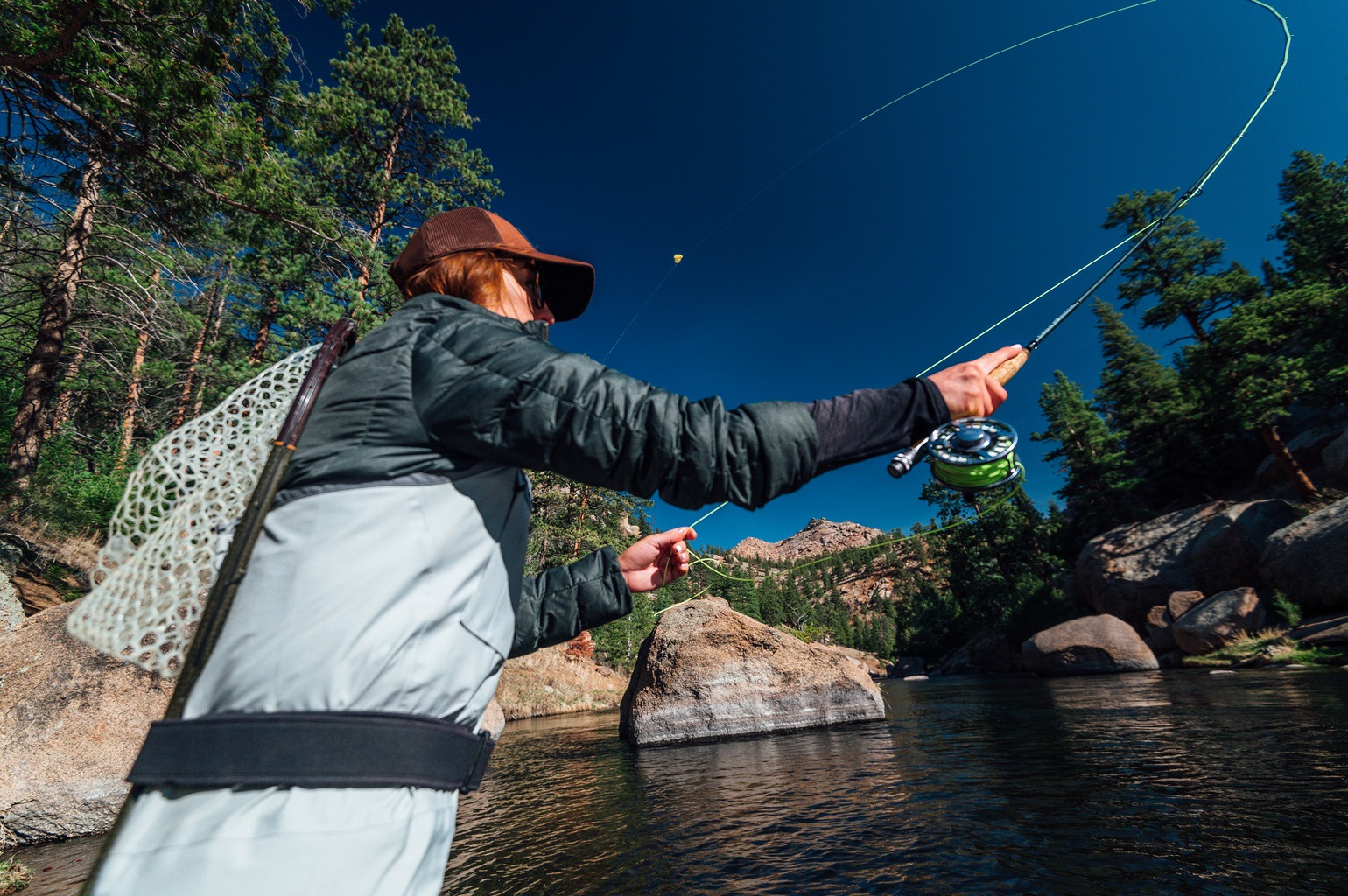Fly Fishing Streamer Flies: Everything You Need To Know
Big fish eat big meals. Streamer fishing is your opportunity to target larger fish in the river. Next, to dry fly fishing, it can provide some of the most exciting fly fishing opportunities. Explosive strikes, ambush takes, and fish charging large flies make for a fun day on the water.
There are many different ways to fish streamers. We will cover many aspects of streamer fishing: when to use streamers, techniques for how to fish them, and the proper rod and reel setup to have a successful day on the water to streamer fish.
Table of contents
- What is streamer fishing?
- Understanding Fish Life cycles and why big fish eat streamers
- Get Mentally Prepared
- When should I use streamers?
- Are streamers wet or dry?
- How to Rig A Streamer Setup for Fly Fishing Streamers
- How do you use a streamer for fly fishing?
- Setting the Hook When Fishing Streamers
- What are the Best Streamers for Brown Trout?
What is streamer fishing?
When people think of fly fishing, they usually visualize small flies. Those flies are either nymphs under an indicator or fished as dry flies on the surface of the water column. The purpose of these flies is to imitate the small aquatic insects that are hatching in the river ecosystem.

Streamers are fly fishing flies that imitate the larger food items that live in the same ecosystem. Streamers are bigger sinking fly fishing flies that imitate minnows, crayfish, leeches, large insects, and even mice. Streamers are usually retrieved for an added movement that mimics the behavior of the food. Streamer flies are tied to represent these food items. They come in all shapes, sizes and are tied in both synthetic and natural material. They can be tied on a single hook and they can also be tied as articulated flies. Articulated flies are segmented streamers that allow the fly to undulate and move while being stripped in.
Mice patterns have gained popularity over the last few years. These are streamer flies that are tied to look like field mice or rats. While most streamers are fished subsurface, these patterns are actually fished on the surface.
Understanding Fish Life cycles and why big fish eat streamers
Before we get into streamer fishing techniques etc., we should understand the lifecycle of fish and why this is important to streamer fishing. During a trout’s life, at some point, they will switch from eating insects and start eating other fish.
This change is behavior makes them piscivores. They eat other fish. Not all fish in the river do this. In addition, there isn’t a scientific consensus on when this happens. When a brown trout reaches 5″-8″ they can start eating other fish. That being said they, may never eat other fish. There are brown trout in Iceland that are 10lbs, that eat tiny black gnats their entire lives.
This means that in every ecosystem, there are going to be some statistical outliers that for whatever reason decide they want to be carnivores, and as a result they grow large and predatory. These are the fish that we want to target while streamer fishing. They eat other fish, mice, and even birds.
Get Mentally Prepared
It should be stated that getting in the right mindset for throwing streamers is really important. When anglers are fly fishing with streamers they are really hunting, not fishing. This is the mindset that you must have, and you have to fish with that purpose. It makes a huge difference when it comes to catching the biggest fish in the river. It requires a different level of fly fishing commitment.

When should I use streamers?
This all depends on what your goals are for the day. In my experience guiding, if the conditions aren’t just right, nymphing and fishing dry droppers will produce more fish, but they will predominantly be average size fish. Clients that want to throw streamers accept that they are probably going to catch less fish, but they are targeting that statistical outlier. They are committed to hunting a fish that is 20″ plus.
What are the ideal conditions for fly fishing streamers? You can fish streamers year-round. Some times of the year are better than others. Traditionally, fall is the most popular time of the year. Water temperature plays a major roll in how you want to fish streamers. The colder the water, the more lethargic trout are. The less they are willing to move and chase flies. As the water temperature warms, they will move to eat streamers. This means that your retrieve needs to be slow in the winter and progressively faster and more erratic as you get into summer.
In my humble opinion, the perfect streamer fishing would be the first two weeks of October. The leaves are changing, the crowds have vanished from the river, and the aggressive brown trout are in full spawn mode. Grey and blue clouds offer the angler an overcast sky. The BWO’s going off and there is fish activity throughout the water column. This would be the ideal time to throw a streamer.
In winter, spring, summer, I usually go with a streamer if we have heavy cloud cover. Cloud cover really gets fish moving. I think this is because they can see the fly better and they also feel more comfortable in low light from predators, birds in particular. If there is no cloud cover, then I will throw a streamer for a while and see if I can move fish. Fish chasing streamers is a good sign. If they won’t commit to eating the fly, then change fly size, retrieve pattern, or fly pattern. If I am not actively moving fish and have changed things up, then I give up and go with nymphing or a dry dropper rig.


Are streamers wet or dry?
Streamer fishing is primarily done under the water. This technically makes streamer fishing with streamers a wet fly game. That being said, fly fishers that truly want to target giant brown trout, anglers can fish top water streamer patterns at night using mouse fly patterns.
Larger fish, particularly brown trout, are aggressive, nocturnal and hunt at night. Night fishing with streamers is how most anglers catch big fish. While most fly fishers might not think of mice patterns as trout streamers they can be highly effective. Fishing streamers at night involves throwing mouse patterns towards undercut banks, grassy banks, and areas where pastures meet river bank. Mice are also nocturnal, so this is why they are a prime food source for big brown trout.
Mice patterns can be stripped back, swung in the current, or stripped back while lifting your rod tip and vibrating the fly back to the angler. This technique is called skating the fly. The key to good mouse streamer patterns is to use patterns that move water and create a visible wake or disturbance when stripped back the angler.
While it is counterintuitive to us. Fish not only use their eye sight to see prey, they also use their lateral lines to detect vibration in the water column. This is why it is critical to choose fly patterns that move or push water effectively away from the fly. Much like bats use sonar to find their prey, aggressive fish hone in on the disturbance in the water as a way to find and identify prey.

How to Rig A Streamer Setup for Fly Fishing Streamers
Once larger streamers get saturated with water, they become extremely heavy flies. Some fishing situations require the use of large weighted streamers too. These factors, plus the fact that this an aggressive type of fishing repeated quick cast to the bank and fast retrieve, require larger fly rods with a heavier weighted line to achieve the desired performance.
In my opinion, the best weight fly rod for fishing streamer flies is a fast action 9 ft fly rod in weight 7 or 8 are a great tool. In addition, while we mostly use a floating line while nymphing and dry fly fishing, with streamer fishing a sink tip fly line is critical while fishing streamer flies.
A sink tip line is a normal floating fly line, except the last few feet of the fly line is weighted and sinks. This offers the fly angler and advantage when mending and allowing trout streamers to sink. Three-fourths of the fly line is floating on the surface of the water because the last few feet sink it creating a hinge point in the line. This makes mending very easy and it also gets the fly deep.
Using shorter heavier leaders helps to turn big flies over. Large fish enjoy log jams. Having the ability to cast a streamer fly accurately to cover is important. A shorter leader will help when casting big flies toward snaggy targets. Typically, I will take a 7.5 foot leader and cut the leader back 1.5 feet. This gives the desired pound test and leader strength to turn the fly over.
While we don’t require them for fly fishing for trout, steel leaders are sometimes needed when chasing toothy critters. Steel leaders are critical when fishing for pike, gar, and other large predators. They are essential in keeping sharp gill plates and teeth from cutting leaders and losing fish.
What tippet and leader should I use for streamer flies?
Knowing what size tippet to pair with your flies is just as important as your fly selection. The thickness of your tippet can make or, quite literally, break the quality of your presentation.
Thicker tippet and leader sizes (0X – 3X) are stiff enough to roll over and cast heavier flies with greater accuracy. Not only that, but bigger flies usually mean larger fish so these thicker tippets will provide higher poundage to avoid losing your personal best catch to a weak knot. Use 3X or thicker tippet for any flies as large or bigger than a size #8. This includes streamers, poppers, and bass bugs or casting to large fish.
I would recommend using these large sizes for streamer flies simply because 0x – 3x thickness makes it easy to turn heavier flies over and make easier casts. In addition, the thicker sizes are higher in poundage so you can catch larger fish that hit harder.
Mid-Range tippets (4X – 5X) are ideal for small streamers and nymphing rigs. These sizes are not ideal for casting big flies and are best suited for flies smaller than #8. It’s not that 4X or 5X is too light of poundage to handle big fish, it’s simply that they may be a little too flimsy for curling heavy streamers easily.
- 0X – 3X Tippet: Ideal for size #8 and larger flies to catch bigger fish.
- 4X – 5X Tippet: Ideal for smaller streamers and nymphing rigs. Very versatile for size #8 to size #20 flies.
- 6X – 7X Tippet: Ideal for small flies and delicate casts. Recommended for size #12 to size #22 or smaller.

How do you use a streamer for fly fishing?
There are multiple ways to fish streamers effectively. Streamers can be swung in the current, stripped in, and even nymphed under and indicator. The choice is up to the angler and what the conditions call for.
Nymphing Streamers
Nymphing streamers can be a very effective technique that is often overlooked by many anglers that seek to catch bigger fish. Huge trout hang out below dams in tailwater rivers often feeding on smaller fish. This is the perfect spot for streamer anglers to think about dead drifting streamer patterns. Similar to your standard nymph rig (you can even add a split shot if needed), weighted streamers under and indicator simulate dead, dyeing or struggling baitfish that have come through dam spillway gates. These large meals are dead drifting with the current of the river.
Baitfish are constantly being pulled into the intakes of large dams. Especially ones that are generating electricity. As they come through the intakes they are either killed, stunned, or maimed and are going to die. The biggest trout key in on this high calorie opportunity. Nymphing big streamers in fast water will simulate this phenomenon and the payoffs can be huge.
Stripping Streamers
Most streamer patterns resemble baitfish. For this reason, streamers are most often casted toward a target and stripped back to the angler. Streamer anglers can utilize an active retrieve when streamer fishing: short strips, irregular erratic strips, and even long slow strips depending on the fishing situation and water conditions. Winter and early spring will call for slower strips, and summer and fall will require more movement as water temperatures are warmer and fish are more prone to chasing streamers.
Here’s how to fly fish streamers, including fishing streamers from a boat or raft.
The most common and effective way to strip streamers in is by boat or raft. A drift boat or raft allows streamer anglers to cover more water, and the boat is typically moving downstream with the streamer as it is being fished.
Cast 90 degrees to the boat towards the opposite bank. Aggressive backcast and forward cast are critical when casting heavy streamers to get the fly on target. A great technique is to throw a big mend into your fly line the second that the streamer hits the water. The fly needs to be tight to the bank and structure as possible. The mend allows the streamer to immediately gain depth and get into the strike zone. Rather than a long leader, shorten your leader so that you have better control over the fly when casting. It will get deeper in the water quicker too. Keep your rod tip low to the water. Start your retrieve and observe to see if fish are chasing your streamer. Retrieve the fly and then make your next cast. This is a very aggressive type of fishing. You are trying to hit as many targets as possible. Streamer fishing is a game of odds. The more we place our fly in fishy water the better chances you have catching the biggest trout in the river.
Fish your streamer around the front of log jams, in front of and behind boulders, and as close to undercut banks as possible. Transition zones are also great places to swing flies over. There are areas where fast water meets slow water, shelves that transition from shallow water to deep water, and areas where murky water is mixing with clear water. Large trout are ambush predators, so all of these areas offer predators a place to ambush baitfish.
How do you swing streamers for trout?
This is an excellent beginner technique if you want to learn how to streamer fish. Swinging a streamer fly is also ideal for wade fishermen. Here’s how to swing a streamer.
Make your first cast upstream, a little more than 90 degrees.
Throw an upstream mend into your line as soon as the streamer fly hits the water. This allows the streamer to sink. As the streamer passes just below 90 degrees of you it is going to start swinging back towards you.
Throw a downstream mend in your line and take a few steps downstream. Keep the rod tip low and point the rod tip toward the fly. The advantage of this technique is that you present the trout with a broadside profile of the streamer fly and you cover a lot of water. At the end of the swing let the fly hang there for a few seconds. Trout will often follow a streamer to the end of the swing before they strike.

Setting the Hook When Fishing Streamers
Setting the hook is the last piece of the puzzle when fishing streamers. While conventional hook sets require a hook set straight up and above the head, streamer hook sets require a strip set hook set.
Here’s how to perform a strip set when fly fishing streamers.
With the rod tip low to the water and pointed straight at the fly, a strip set involves a firm strip that will set the hook. Use the same rod-hand finger that controls the stripping to gradually release pressure on the line. The line should be stripped in with a fast, jabbing motion that spans approximately one foot to the full length of your reach.
The advantage is that this hook set drives the hook deep into the fish’s mouth. In addition, it also puts you in the same position that you should be in to fight a larger fish.


What are the Best Streamers for Brown Trout?
There are literally hundreds if not thousands of effective streamer patterns on the market. The best flies are the ones that routinely catch fish. We will name a few patterns that seem to work well, but before we do that it is best to cover the characteristics of what makes a streamer effective so you can choose streamers that will best work for you.
First and foremost, effective streamer flies push and move water. This is a critical characteristic that makes a huge difference when fishing streamers for big brown trout. As we mentioned earlier, huge trout pick up the water’s disturbance using their lateral line and will often identify prey this way.
Secondly, an effective streamer is made out of materials that move well in the water. Rabbit fur, deer hair, marabou, and countless other materials move really well under the water and give streamer flies a realistic moving motion. Rapala’a are extremely effective conventional lures in large part due to the way they move underwater. Fly anglers don’t have the advantage of small crank lips and hard bodies to move a fly. Choose flies tied out of materials that move in a natural way to entice strikes.
Choosing the right color can also be critical in having an effective streamer fishing day. Most streamers in a fly shop are tied in dark olive, black, natural grey, white, or yellow. As a general rule of thumb, on a bright day fish a bright color streamer like white or yellow. If there is cloud cover, then fish a dark colored streamer in black or dark olive.


What Streamers To Use for Trout?
As we briefly covered above, good streamer fly patterns often feature a few universal characteristics that make them effective. Here are a few of our favorite streamer patterns that always seem to produce.

Kelly Galloup’s Sex Dungeon
This is a large articulated streamer fly that is very versatile. You can fish it on a floating line or sinking line. Darker colors cover sculpins, crayfish, and even smaller trout. It moves naturally in the water is effective at getting those reactionary strikes.
Sanchez’s Double Bunny
The double bunny won the prestigious Jackson Hole One Fly Tournament three years in a row. The two pulsating strips of rabbit fur look realistic underwater. It is an effective pattern that has a large profile in 3″-5″.

Galloups Boogie Man Articulated Streamer fly
This is also a Kelly Galloup designed fly. The huge beefy head moves water and gives the fly lots of action. These streamers are perfect as sculpin imitations.
Fly Fishing Made Easy 👍
Our Quarterly Fly Club ships 1,000’s of flies to anglers all across the United States. Receive curated fly assortments selected for the season with in-depth articles on how to fish them. Great for beginners to learn and for intermediates to discover new flies.




